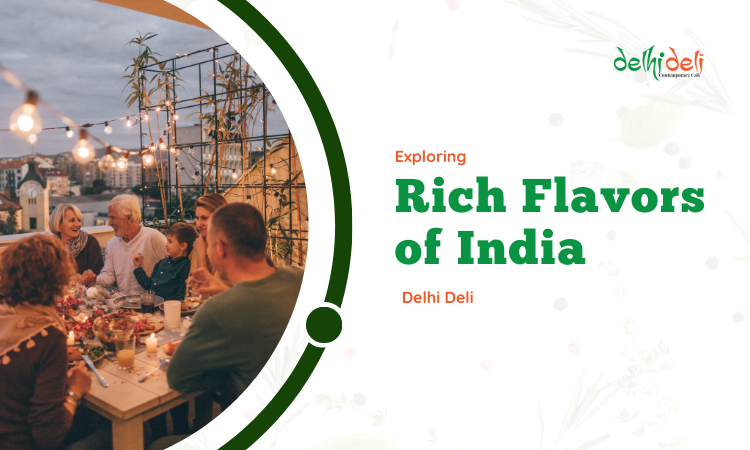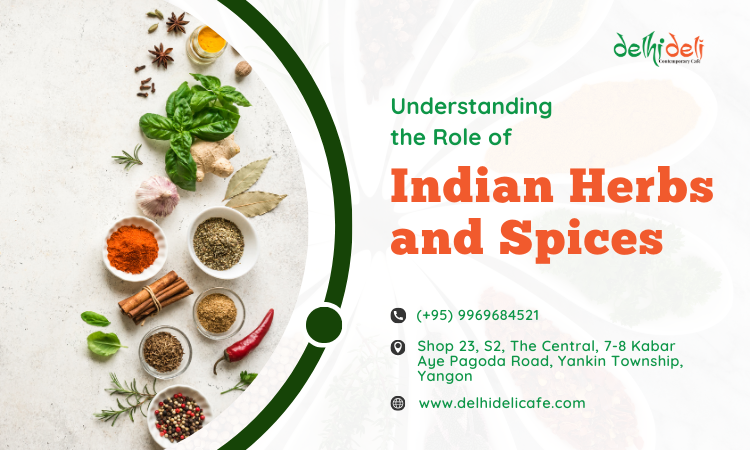Introduction:
Today we are going to touch upon the amazing topic of Indian food which has attracted food enthusiasts worldwide. It is not just about taste, but it is also about culture. Indian herbs and spices continue to guide us in this manual, and we will look into their starring role deeply playing out in every dish in an Indian spice restaurant. Already, knowing the benefits of organic turmeric power is not the only aim but rather to unveil the top ten foods used in Indian cuisine join us as we start a travelling through the diverse and aromatic world of Indian healing spices.
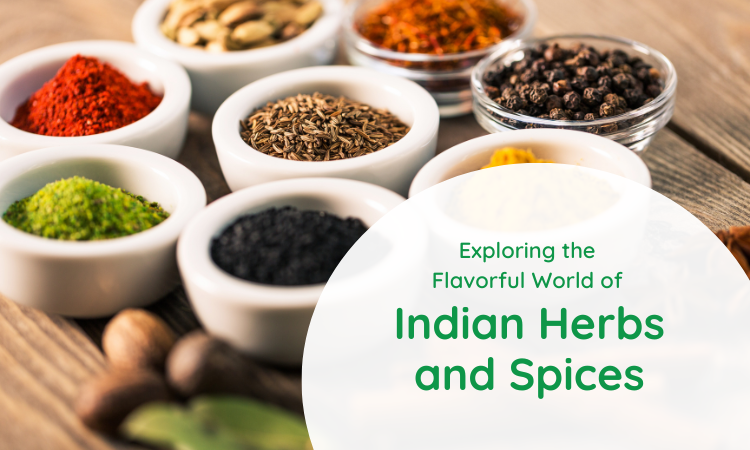
1. Exploring the Flavorful World of Indian Spices: A Guide to Must-Have Ingredients in Indian Cooking:
Venture on a gastronomical ride that will humbly guide you into the imaginative world of Indian Cuisine. Spices for India is the soul or attitude and with that are transmuted even simple dishes into aroma fragrances. Be it as a professional home cook or a low-started rookie, a pair of essential ingredients are the two of your eyes that enable you to be the magician of cooking.
10 Must-Have Spices for Your Pantry:10 Must-Have Spices for Your Pantry:
Turmeric: This golden spice is the ingredient that adds all the vibrant colors and earthy warmth to the curries, dals and rice dishes and make them something unique and extraordinary. Pick out organic Indian Turmeric powder owing to its purity and excellent taste.
Cumin: Roasted seeds of cumin have an inviting warm and nutty scent which play the role of ingredients foundation and are used in many curries and lentil recipes.
Coriander: The plethora of vibrant, beautifully citrus notes of coriander seeds and coriander are a for continuum of dishes where freshness and depth are added to carious sauces, masalas, pickles etc.
Garam Masala: This spice blend which normally have the cloves and allspice, benefits you in that they provide the heat and complexity in the cooking of your dish.
Chili Powder: Whether from mild to strong, chili adds spice to the curries, marinade and chutney. Besides, the chili powder maters a lot.
Black Mustard Seeds: Majestic olfactory notes of these sharp and acrid spices electrify the palate, and the oil is used for pan frying or deep frying at the start of cooking.
Fenugreek: Those small seeds which seems to be a little bitter are an integral part of curries, dals and they even make the breads more delicious.
Cardamom: The rich, floral quality of cardamom literally perfumes both spicy and sweet dishes which range from curries to rice puddings, and it makes a real difference.
Ginger & Garlic: They are a sensational pair capable giving that aromatic base in numerous of Indian delicacies of spice and flavor.
Cinnamon: Cinnamon, which is again obtained from the root of the tree, provides a warm, woody sweet flavor in curries, rice and deserts.
Beyond the Flavor:
Indian spices are not just about flavor; they offer up delicious culture and healing values. Most, e .g. turmeric and ginger, which have been known for their curative properties for ages.

2. Unlocking the Secrets of Indian Herbs and Spices: Enhancing Your Culinary Skills at an Indian Spice Restaurant:
Try to imagine that someone prepares for you the incredible combinations of cardamom, cumin and turmeric. Not only gifts of spices but also of the fragrant memories craving to be spoken about. Experience of a cultural and culinary journey is what makes Indians spice Restaurant a unique and kind destination to dine.
To speak about the Spice of Indian cuisine is to say about the soul of Indian cuisine, each carries its own notes in a symphony of flavors. However, for a significant number of the unlearned people, the task of moving through the dynamic landscape of Indian herbs and spices might sound like a mountainous task. And that is how your beloved Indian spice restaurant becomes your arc opening to undoing your ignorance.
Learning by Immersion:
At times of old, people learned cooking basics from cookbooks or tutorials. Be carried away with the beauty of the images and the aroma. Do not miss out on the opportunity to listen to the people and their stories. Watch chefs going about their duties like music to the ears when they skillfully pop mustard seeds onto the pan and their melodious singing announces that there is about to be great food ahead. Question them about organic India turmeric powder which is a symbol of the sun and its color which shows the sun’s warmth that it gained as it grew. Explore the ancient ethnomedicinal belief behind ” “ginger and clove” and their healing properties that are used not only in the kitchen but also in medication.
Interactive Spice Exploration:
Plenty of restaurants offer hands-on workshops dealing with mixing spices to suit your specific tastes- from the coarse grind of a unique garam masala to the intricate and precise combination of specific spices under the guidance of professional chefs. Find out about how local nuance, level of acidity, and discipline with flavors are integrated into the process. Experience cardamom pods’ uniquely smooth texture, and the aroma of coriander seeds that will dwell in your nostrils, and allow your senses to guide you.
Spice-Inspired Feasts:
Dining through a wide variety of tastes you will complete new spices in your cuisine. The beauty of hanging art can bring smaller spaces to life, adding a sense of visual interest and creativity. By carefully selecting the right pieces, weaving color and texture together, and incorporating innovative techniques, you can elevate your living space, providing a welcoming and captivating atmosphere. Love how turmeric spices will make your dal taste like some comfortable earthiness, appreciate the citrus from coriander in a refreshing raita, and sense how cloves will give you korma a smoky depth. Every food is a tale which is revealed through a bite and the conversation that follows is the inroad. Don’t even worry; just inquire of the server on spices used, as well as on their role in the dish,
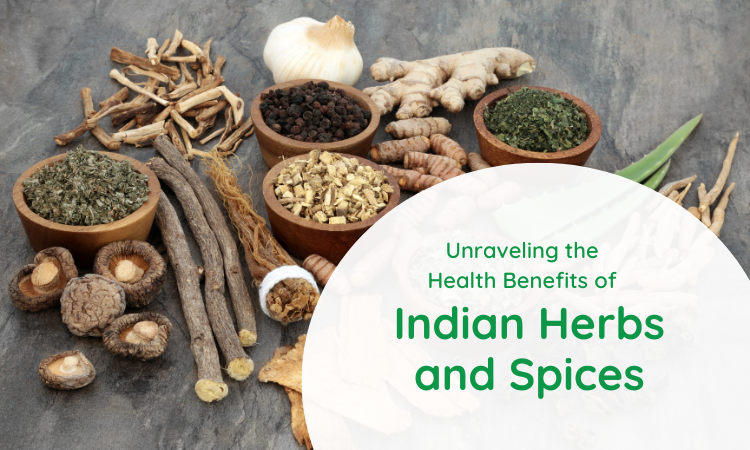
3. From Turmeric to Cardamom: Unraveling the Health Benefits of Indian Herbs and Spices:
Nobody thinks about the fanciful Northern Hemisphere delicacies while overlooking the secrets of wellness of the Indian cuisine. Within the Indian spices and herbs family, not only does each individual ingredient have an amazing boost when it comes to health, but these are chosen to be meticulously tasty. Let’s embark on a journey, unraveling the hidden benefits of some popular spices:Let’s embark on a journey, unraveling the hidden benefits of some popular spices:
Golden Wonder: Now turmeric: generally organic India turmeric, is an incredible spice, which is not only a star of the kitchen, but also responsible for the visible vibrant color of your curries. The curcumin, acting its active ingredient, provides the pain relieving features which may also be used in treating the effects of arthritis.
Gut Guru: Cumin: This spice is renowned not only for its flavor but also because it can settle stomach upset and improve digestion. It play role of a natural detoxifier, enhance liver functionality and even have antibacterial properties in its whole.
Immunity Booster: Ginger is an extremely efficient remedy apart from motion sickness that soothes and operates well on variety of health conditions. Ginger is abundant in antioxidants, aiding the immune system and providing the body with a capability to resist diseases occurring during that time.
Heart Protector: Fenugreek: Make no mistake; these tiny grains are potent! Fenugreek helps to control the blood sugar levels, so it is qualified to be included in the list of useful heart assistance. Moreover, bulk fiber helps to generate regular bowel movements.
Brainpower Booster: Cardamom: Extremely Competent, Cardamom is not Only for Desserts, Its Aromatic Power Extends to Cognitive Health as well According to research, it may improve memory and minimize the attention deficit and, thus is a key to the brainpower.
4. Unleashing the Magic of Indian Seasonings: Elevate Your Dishes with Organic India Turmeric Powder:
Beyond the tantalizing aromas and vibrant colors, Indian cuisine holds a secret weapon: evils spices. Every single one, carefully selected, and put together, braid the tapestry of flavors which errands your palate. While it is a complete organic orchestra in its own right, Organic India Turmeric is the jewel in the crown – the golden maestro!
Golden Goodness: Organic India Turmeric Powder is not just spice anymore but product of powerhouse of taste and health. The vibrant curcuminous within dishes enticingly colors the dishes with an earthly glitz, while also possessing anti-inflammatory and antioxidant properties, therefore presenting a food and health wonder.
Beyond the Curry: Toss the mythus of people taking turmeric as belonging only to a putting curry dishes.Unleash its versatility! Pile it up over roasted veggies for even more vibrancy or add just a small dash to your soups and stews for a delicious added flavor. Want more comfort? Make a golden “latte” – it’s delicious and healthy.
Spice Up Your Senses: Take a look at your neighborhood’s Indian restaurant that you love going to, and use it as a reference point. Truck in the process of how the chefs get a symphony of spices, including organic India turmeric powder, to create subtle layers of flavor in every dishes. In investigation don’t stop now and again, go on experimenting, and see how just a sprinkle of cumin, a dash of coriander or a pinch of fenugreek will add more zing to your dish.
From Simple to Sensational: Going to simple options of recipes. Bulk up a ‘cami and ‘cumin roast cauliflower for a quick and tasty side dish. Harness the bio-fuel power by adding Organic India Turmeric Powder as cooking water additive. With the disaster of your confidence,sam33 interview skills go2rss some bewitching curries, slow-cooked lentils, and even Himalayan villages.
5. 10 Essential Indian Herbs You Need to Know for Authentic Indian Cuisine:
Dive into the heart of Indian cooking with these 10 essential herbs: the door to soothing soups, colorful lentils, and fragrant gravies; and welcome to the world of warming rices, comforting roti’s etc. Dishes that are both flavorless and dull – that is what you won’t find when it comes to Indian cuisine, because these herbs are nothing but intelligence unlocks the secret of flavors, detail of every dish.
- Turmeric: The shining star of Indian spices, turmeric captivates the taste buds with its bright yellow color and earthy taste that can easily be mixed into a variety of dishes. Organic India’s Turmeric Powder fulfills its role in the kitchen with pure and full-bodied flavor, backed by the health benefits one can obtain.
- Coriander: Utilizing its adaptability, it offers us the bright citrus flavors along with dried seeds which are consumed both fresh and dried. Coriander can be used to give a zing to chutneys and raitas by sprinkling it over the dishes or grinding the seeds. For curries and spice blends, coriander seeds can be ground.
- Cumin: Toast cumin seeds to provide from the blend of the warm nutty notes which are essential to so many curries. Drop by your nearest Indian spices restaurant to get trained in bringing out maximum flavor with “tempering” cumin seeds.
- Mint: Bay leaf sprigs will provide a refreshing touch to raita, dip and some curries. Talk also about the regional variations – the spearmint-like pudina of north India or south India with moderate peppermint.
- Fenugreek: They has size of small seeds but great flavor, it being slightly bittersweet and taste like maple. So it suits curries, dals and breads. Get your spice vendor interested and ask him/her about the leaves of the fenugreek plant, which are added to sambar, a famous South Indian dish.
- Holy Basil (Tulsi): The used of sacral jasmine is not only a cultural identifying point but its calming fragrance is important in the local community and for people who can enjoy the health benefits of jasmine. Consume fresh tulsi leaves in herbal teas, raitas, or as garnish. Use our AI to write for you about: Sustainable Fuel Alternatives: The Future of Transportation.
- Bay Leaves: Tasty twist plies for those long-cooked dishes is done by using dried bay leaves, which are amazingly woody. Check for whole leaves before serving and remove them.
- Black Mustard Seeds: Appearing as the mass of sharp, pungent popping when splutter them in hot oil. Such sounds of splutter forming the basis of many South Indian dishes. This is readily seen in at your area Indian spices restaurant.
- Curry Leaves: These non-turmeric leaves provide lemon like fragrance and help Indian meals in getting further exclusive flavoring with a dash of spiciness in it. They will taste wonderful when fresh or dried, provided the information directions has been followed accordingly from the spice shop, or the foods place.
- Fennel Seeds: Fennel seeds are both sweet and licorice- like and it is they that give this depth of taste to spice mixes such as garam masala and often are used in North Indian curries and lentil dishes too.
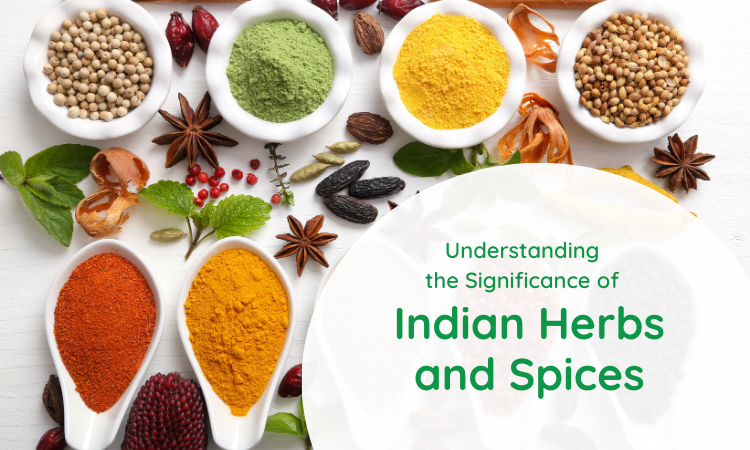
6. A Spicy Journey through Indian Cuisine: Understanding the Significance of Herbs and Spices:
Close your eyes and imagine this: crunchy cumin seeds whizzing on flying hot oil, pleasantly fresh tropical scent of coriander into the air, and some spicy turmeric involved that gives the dish golden color. That is the sensory beauty of the myriad mixes of Indian spices, the vitalizing blood of a cuisine that is as diverse and vibrant as the Indian subcontinent. But the importance of it does not stop with its fact delivery – it enriches the story of the past, the culture, and even the medicine that is the root of their invention.
A Symphony of Flavors:
Every botanical diversity in India slightly differs from area to area adding up to the uniqueness of the regional spice palate which in turn reflects the local ingredients and as well cooking traditions. In the north it is garam masala with which you add that bitter-sweet flavor while you are in the south you put mustard seeds and curry leaves to sizzle. Visit the Indian spiceplace restaurant around your area – take some interest in the chef and your questions, and you will know the stories behind every spice mix.
Beyond the Plate:
Spices were not just simply what satisfied the palate; they were ancient uses and remedies. «Ka万na», whose color often resembled golden, was recognized for being used for its capability to treat various inflammatory diseases. Ginger, the pungent spice of the Middle East purifying the gut, was used. Fenugreek, an encourager of digestion but still small, has incredible abilities. Find out about the “Indian healing spices” and their medical application – there is not as much power as knowledge in culinary and dietary realms.
Unlocking Culinary Secrets:
Don’t be intimidated! Start simple. Learn and shop for spices at the spice shop, they will definitely guide you through every step. Try the Organic India Turmeric Powder and see how the spice enhances dishes with its wonderfully sweet flavor which can be added without changing the prominent taste in rice, roasted vegetables or lattes. Surviving this gingerly phase will shoot up your confidence, and you won’t have difficulty reproducing those mouthwatering dishes you enjoyed at your exhibit Indian spice restaurant where the fine art of layering spices is for complex flavors.
A Journey of Discovery:
Accordingly, herbs, and spices along with their usage characterizes the Indian food culture. For every ingredient our taste buds experience, a legacy, a story waiting to be told, is carried. And hey, why not, as long as you have the courage to explore the possible combinations and create new tastes, you will get countless works of art in the kitchen.
7. Healing Spices of India: Incorporating Indian Superfoods into Your Daily Diet:
Bye-bye to the way-too-floating kale and quinoa! The Indian old age wisdom is a document pretending to contain some “superfoods”; they are flavorful spices, but such spices are also believed to have numerous health benefits. Let’s explore some of these “healing spices” and discover how to easily incorporate them into your daily diet: Let’s explore some of these “healing spices” and discover how to easily incorporate them into your daily diet:
The Golden Star: The kingpin of the spice, with its bold and burnt saffron color, is the golden spice, curcumin-rich turmeric. Organic India Turmeric powder is made in adherence to food safety regulations that ensure a supply of pure organic turmeric that is full of strong taste and anti-inflammatory properties. Spice it on roasted vegetables, throw it into smoothies or better still brew up a golden latte for the perfect warm healthy first-day meal.
Ginger Power: This is not the only advantage coconut contains for motion sickness relief. The tiny grinder is well endowed with antioxidant and anti-inflammatory agents. Flake it off for stir-fries, craft a galling ginger tea, or even season your marinades for meat or tofu.
Cumin & Coriander Combo: While the qualities of this duo bring crystal clear clarity, they complement each other well. Not only does cumin facilitate digestion and give its flavor, but also coriander creates a perfect blend of fresh light citrusy notes. Try it out in curries, dals, for example, or on roasted chickpeas as a snack that contains more protein rather than being restrictive.
Fenugreek’s Fiber Power: Weighing less than a gram, it is easy to disregard them as having little significance, however, these small seeds are mighty indeed. Fenugreek which contains fiber does good for the gut and balances blood sugar. Use them in days, make salads with them or a very popular way is to try the little green sprout of fenugreek for a unique, crunchy factor.
Cardamom’s Cognitive Boost: Regarding sweets, cardamom may not be the only player with brain benefits. Incorporate a pod in your morning coffee, grind it yourself into different spice blends, or if you simply want, chew on an untouched pod as a refreshing digestive.
Explore Your Spice Haven: Why not visit a nearby spice restaurant of Indian dishes? Observe how chefs go about creatively harnessing the therapeutic value of the spices and query them to satiate your culinary curiosity. Besides, the cultural facets of that show should be digested as well. Use this, they are not only all on your shopping list; they are your shortcut to a place full of flavor and well-being.
8. Mastering Indian Cooking: How to Use Indian Herbs and Spices for Delicious Flavors:
The aromas of cumin take over, the bright yellows of turmeric and the soft sweetness of cardamom colors play on your palate. However, a lot of people may consider this aspect as a very challenging task. Fear not, aspiring chefs! Here’s your guide to unlocking the secrets of these culinary gems: Here’s your guide to unlocking the secrets of these culinary gems:
Start with the Essentials: Build a stock with the essentials like turmeric (Try Organic India Turmeric Powder), cumin, coriander, chilli powder, garam masala, ginger, garlic, black pepper, etc. They mainly develop into a number of food presentations.
Understand Spice Blends: Garam masala, this fantastic component, provides spiciness but also that highly descriptive deep flavor. Looking into regional variations – Southern sambar is made crisping curry leaves whereas spiced North Indian curries might contain cloves and star anise. Go to the Indian spice restaurant in your neighborhood and see what types of spices they are using and which blends are more popular. Then get suggestions for blends.
Embrace Toasting & Tempering: In general, the bulbous shape of spices, including cumin, coriander, and fennel seeds, allows every part of the spice to be exposed to heat, which causes it to release the maximized aroma. Master following spice restaurants` chefs’ tempering skills as they gently heat spices in hot oil – this zestful blending technique is very catchy and understandable.
Layering Flavors: Spices are the ruler of all in Indian cooking. Different spices are added at different stages of the process. Begin with whole spices making initial depth, then finish with ground spices making the flavour more refined and multifaceted. Experiment! Likewise, adapt the spiciness levels to what you like.
Freshness Matters: Making use of fresh herbs such as coriander and mint is a preference, however. It is not only they vibrant color of them but also a lift the dish. Seek ideas from nearby spice shops or farmers’ markets. Photo by Feng
Don’t Fear Experimentation: Commence with simple recipes, like daal (Latin for lentils) or oven-roasted vegetables seasoned with basic spices. While you go for it, try to venture in as many of the regional specialities as you can. For example, sambar from South India and butter chicken from North India. Dieting shouldn’t terrify anyone with its ability to customize based on their liking.
Seek Inspiration: Plunge into the world of Indian cuisine, where you find yourself in space full of culinary delights. Go to the local Indian spice restaurant, participate in the workshops organised there; and choose to watch cooking demonstrations online.
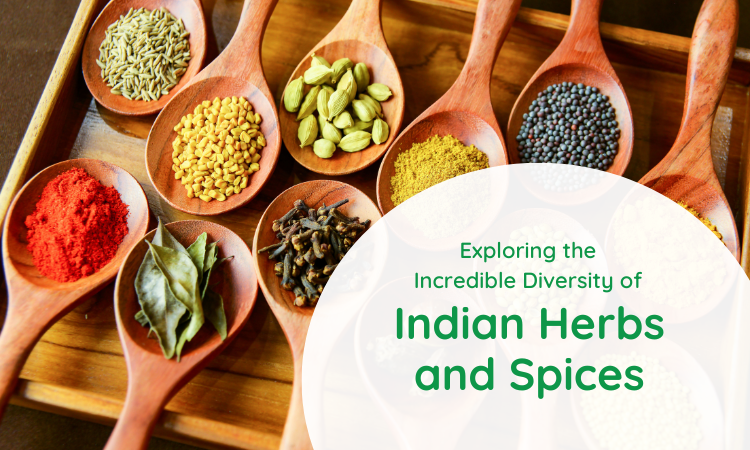
9. Spice Up Your Life: Exploring the Incredible Diversity of Indian Spices and Seasonings:
Forget bland, one-dimensional dishes! India’s food is not about the flavors and spices as add-ons as they visit the taste buds, but cultural representatives, each bringing its own story. Let’s embark on a delicious journey, exploring the incredible diversity of these culinary gems: Let’s embark on a delicious journey, exploring the incredible diversity of these culinary gems:
A Symphony of Flavors: Knowing that these flavors are local, and a winner on their own, make you yearn to have that potato bhaji again with four different doses, the masoor dal that you’re mother used to make, or that lip-smacking korma that grains in every mouth. Every region in India has a different dialect of spices, depicting the foodstuff in that region and the tradition that has been passed over numerous generations.
Beyond the Familiar: While turmeric and garam masala are everyone’s friendly neighbors, go deeper into the jar to try something unique (it is organic and good!)! Nothing is more invigorating than smelling familiar ingredients of biryani like the earthy musk of black cardamom, the floral elegance of saffron, or the cooling touch of fennel seeds! The Indian spice restaurant close by can lead you even if you are just a stranger. Interrogate the chefs, ask questions, and let them be your guides as you pass through this maze of smells.
More Than Just Taste: These aromatic Indian spices are essential constituents of the culture of this country. The pungent taste of chillies helps in keeping evil spirits at bay, and turmeric’s bright hue reveals prosperity Along with the “spice” perspective, discover their “healing” powers as well. For instance, ginger calms the stomach, fenugreek facilitates digestion, and the cumin body alleviates.
Unlocking Culinary Secrets: It’s not scary at all! Start simple. Go on-site to the local spice shop, being accompanied by the purchasers who have a greater understanding of the product. How about adding a pinch of Organic India’s Turmeric Powder while making rice, roasted veggies, or even lattes, which will give the dish a glowing hum? Then, as you weed out those spices you don’t like, adapt your favorite uncomfortable spice restaurant cuisine, and learn the intricacies of layering the spices for complex flavors.
A World of Inspiration: Dip into the fairy tales’ most vibrant parts of it! Consider enrolling at workshops in the Indian spice restaurant in your area, browse some online cooking demonstration videos, or simply ask some helpful staff at the restaurant to give some cooking tips. Keep in mind that the knowledge, indeed, is mightiness the same.
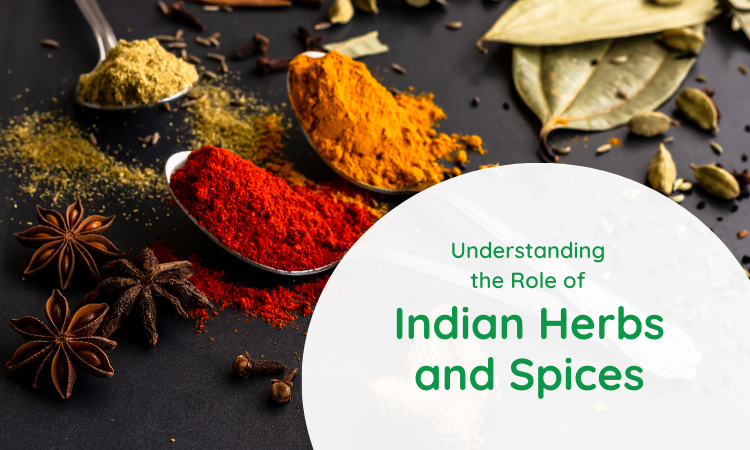
10. The Art and Science of Indian Cooking: Understanding the Role of Herbs and Spices for a Flavorful Experience:
Indian cuisine is, in fact, an art form, where the ingredients not only show multicoloured splendour but also create a heavenly perfume, with leaves and spices being the main actors. Not only the joy we bring to our plate but also the intriguing imagination we delve into are part of the gift we can find as we unravel their secrets that will eventually lead us to a true understanding of its practice.
The Symphony of Spices: Contrary to the stereotype that the term ‘curry powder’ represents all of the excitement of Indian cuisine. Cumin, coriander, turmeric and chillies are not only the main players but also the chief conductors of this orchestra of spicy notes, coming both from North and South. From the spicy earth of North Indian food with garam masala giving warmth, to the zing of citrus from mustard seeds of South Indian sambar, there is so much to explore. First and foremost, your favorite Indian food eatery is your guide – watch what the chefs do, talk to them, and gain a new taste for the intriguing blend of flavors that form each spice.
Beyond the Flavorful Canvas: Indian spices are more than mere flavor carriers; they are cultural envoys and maybe bridge the gap between scientific and traditional medicine. Turmeric, the source of golden nimbus and anti-inflammatory properties, gets its radiant color from the curcumin content. Digestive health and the easygoing nature of ginger make it something of a choice among people. Try to learn old beliefs: go to a spices shop and see if there are some herbs with healing properties that were used as medicine in the past.
Understanding the Science: A diverse group of spices have their own forte, some exhibiting characteristics of more volatile chemicals. Cumin toasting while volatile aromatics chemical compounds are being released. The result of this process is a nutty flavor. Turmeric’s richness of earthy warmth provides a feeling of warmth from the presence of curcumin, whereas the heat of chillies stems from the compound known as capsaicin. These particularities teach you to use the spices intentionally, thus you are able to create dishes with more and more complex tastes, like a talented artist who has become a master of his own craft.
From Novice to Culinary Maestro: Whoa, come on, boy! Start simple. Down the road, play around with Organic India Turmeric Powder, bringing its pure taste to veggies roasted in the oven or this lovely golden latte as a lovely way to unwind. Be a part of exemplary spices-tempering technique at your Indian restaurant where hot oil releases the aroma of spices and these form the base of your culinary.
Embrace the Journey: Abundant in a wide variety of Indian spices. Attend the workshops that are already going on at the main restaurant in your locality
Conclusion:
In learning how to make Indian food properly, the techniques of cooking do not consist entirely of the art – it calls for much more than that; the secret behind authentic Indian flavors hides in the knowledge of the role that some specific herbs and spices make them originals. Whether it’s making the most sumptuous Indian food at home or a professional at an organic Indian spice restaurant, you can transform your food and take it to new heights simply by using organic India turmeric and other healing spices. Thus, embarking on the world of Indian spices and herbs is an exciting prospect and once you figure out how to deal with them, it will be only a matter of time before you can use those spices and herbs to enhance the flavor of your dishes and surprise your audience!



